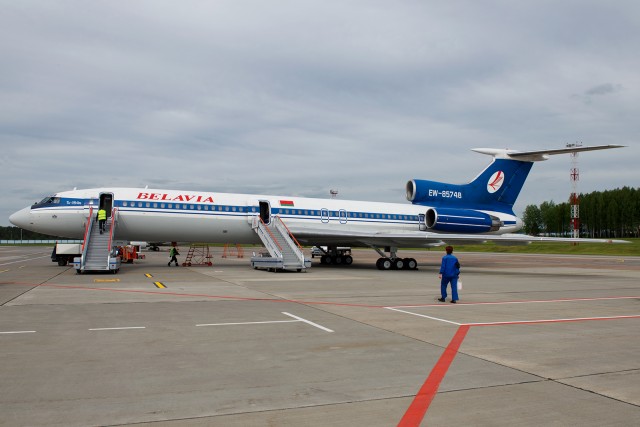
Our chariot, EW-85748, on the ground at Minsk National Airport – Photo : Bernie Leighton | AirlineReporter
From the [AR]vault: This story was originally published on June 8, 2015.
The Tupelov Tu-154 is a classic airliner that many AvGeeks admire, but unfortunately it will no longer be able to fly with-in continental Europe. I was lucky enough to snag a seat on the last flight, a Tu-154M on Belavia to Minsk (MSQ).
You see, many in Europe were getting upset with the rare Soloviev D-30 engine gracing their passenger airports. The noise and the environmental impact did not make many friends. It is too bad, because it’s not like the 737-800 is replacing the Tu-154M on a one-to-one basis with every airline operating them at a speed comparable to that of light anyway. Why even bother other than to make a point?
My friend, who happens to divide his time between Paris and Minsk, runs an aviation enthusiast tour company and asked if I wanted to join a group to give the Tu-154 a send-off from Europe. I packed my things and ended up in Geneva (GVA) on May 29th, 2015.
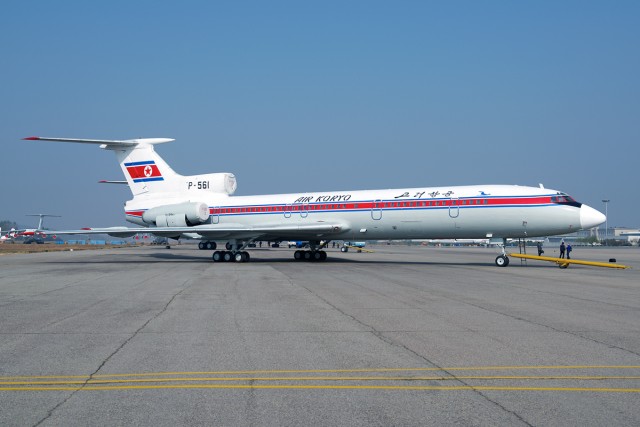
An Air Koryo Tu-154B-2 parked on the ramp at FNJ – Photo: Bernie Leighton | AirlineReporter
I have a strange and obsessive love for the Tupolev Tu-154. How obsessive, you ask? Well, take a look at my model cabinet. That’s right. I own every possible Tu-154 model out there. I even have a few custom ones on order.
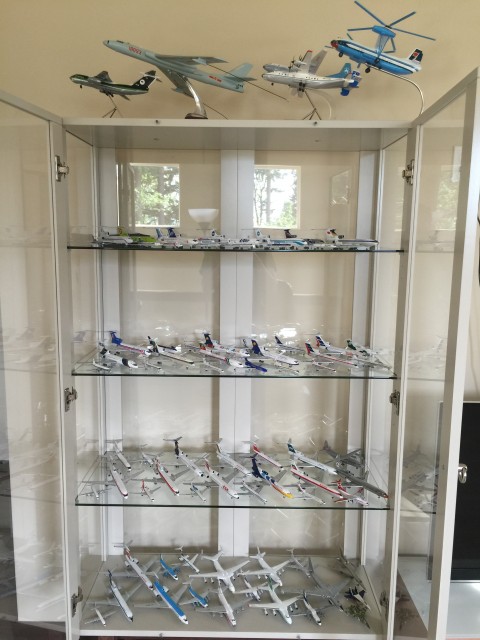
No one can say I don’t love the Tu-154 – Photo: Bernie Leighton | AirlineReporter
I seek out 154s to fly on; I have three lined up this year.
So, what makes this plane so awesome? Well, I was going to do an article last year about what it was like to fly on an 154M, but then Jacob flew on a better M on almost the same day. So we’ll have to wait for the 154Bs later this year (the older, rarer version of the 154).
Until then, let’s discuss the history of this aircraft.
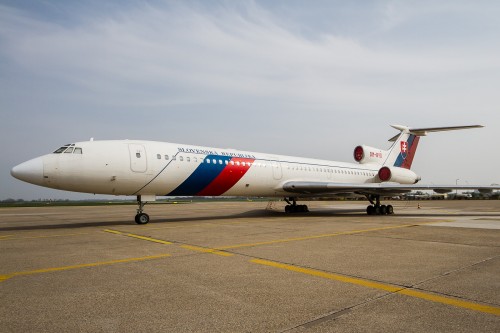
The Slovak Government Tupolev Tu-154M – Photo: Jacob Pfleger | AirlineReporter
Not too many opportunities exist in this day and age where one can still take flight on a classic Russian aircraft, let alone in a VIP configuration. Recently, I was fortunate enough to be invited to take part in a flight onboard a Slovak Government Flying Service (SSG) Tupolev TU-154M. For me, this would be my first-ever flight on a Russian aircraft, and to say I was excited would be an understatement.
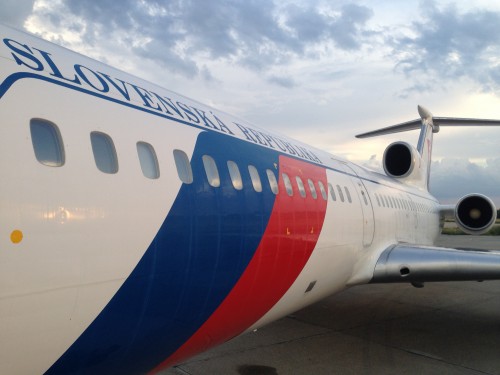
Time to board my first Russian aircraft – Photo: Jacob Pfleger | AirlineReporter
The flight would be an empty ferry sector from Prague-Bratislava, a short 40-minute hop, but I knew I would savor every minute. SSG presently has four aircraft in its fleet, but only three are in operational service. The fleet consists of two Tupolev TU-154Ms (reg numbers OM-BYO and OM-BYR), with the latter being used for spare parts.
The remaining two aircraft are Yakovlev YAK-40s (reg numbers OM-BYE and OM-BYL). The Slovak Government not only carries out various head of state and other VIP missions, it also participates in various humanitarian and troop-carrying missions on behalf of the Slovak Government.
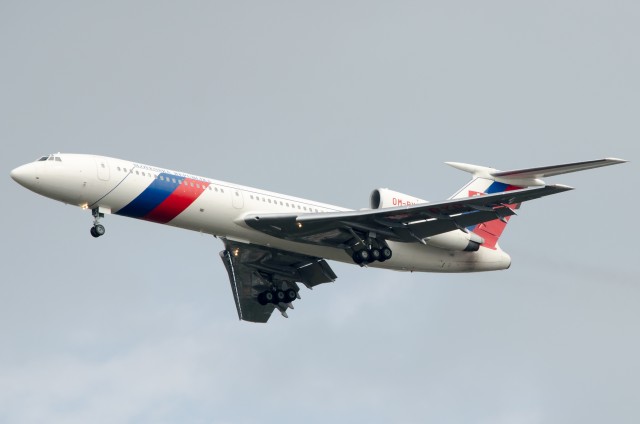
Tupolev TU-154 (OM-BYO) in Slovakian Government livery. Photo by Jason Rabinowitz.
Last week, a chapter of Soviet aviation has been closed forever. Over 40 years after its entry into service, the final Tupolev Tu-154 has been delivered to the Russian Defense Ministry, according to Russian news agency RIA Novosti. Although full production ceased back in 1997, the Tu-154 remained in limited production for quite some time, with a final total of over 1000 airframes produced. The first Tu-154 was delivered to Aeroflot on February 7, 1972.
The Tu-154 was the last of the commercial ’œtri-jets’ in production, outlasting popular aircraft such as Lockheed L-1011 Tristar and Boeing 727 by several decades, both of which saw ther last deliveries in 1984.
Designed to be the workhorse of the Soviet aviation industry, flying into some of the harshest airfields in the world, the Tu-154 went places other jet powered aircraft of its size could not. With its oversized landing gear, the Tu-154 was even able to land on unpaved runways.
Contrary to popular belief, the Tu-154 was not an unsafe aircraft. According to the the Aviation Safety Network, the Soviet built aircraft has been involved in 110 serious incidents, 68 of which resulted in a hull loss, 30 of which saw no deaths. Several incidents were the direct result of terrorism or military action, poor weather and runway conditions, as well as pilot error and poor maintenance. Comparatively, the Boeing 737 has been involved in 159 hull-loss accidents, though over 7,000 737s have been produced.
A string of recent high profile accidents accelerated the withdrawal of the Tu-154 from passenger service. Most notably, on April 10, 2010, a Polish Air Force Tu-154 carrying many high level government officials, including the President of Poland, crashed near the city of Smolensk, Russia, killing all 96 on board. That accident was blamed not on the aircraft, but on pilot error. These accidents prompted the Russian Federal Bureau of Aviation in March 2011 to recommend the withdrawal remaining Tu-154s from passenger service.
As of early 2012, 104 Tu-154s remained in service with various airlines throughout the world, as well as several military operators. The Russian aerospace industry has yet to produce a strong competitor for Boeing and Airbus. The Sukhoi Superjet 100 is Russia’s latest attempt at competing, but only 223 have been ordered thus far, and competition from countries such as China and Japan is heating up.
The Tu-154 will forever has a place in aviation history as a tank of an aircraft, going where other aircraft wouldn’t even dream of. Although it had its fair share of black eyes along the way, this Soviet designed aircraft stood the test of time.
 |
This story written by… Jason Rabinowitz, Correspondent.
Jason is a New York City native who has grown up in the shadow of JFK International Airport. A true “avgeek”, he enjoys plane spotting and photography, as well taking any opportunity he can get to fly on an aircraft.
@AirlineFyer | FaceBook | |






